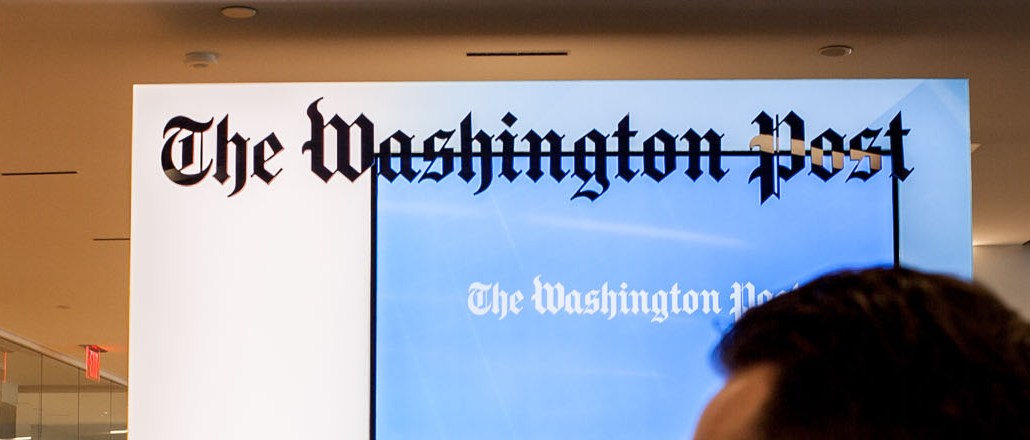Inside The Washington Post’s internal agency and its growing ambitions

The Washington Post’s branded content team is starting to feel the impact of the newspaper’s rise to digital prominence over the past year. The WP BrandStudio said it has doubled the number of advertisers that are running sponsored content campaigns in the past 12 months, and that it is landing more national clients including Dell, GE, JP Morgan Chase, Siemens, UPS, Lockheed, Audi and FX “The Americans.”
Last month, the studio, run by Annie Granatstein and Paul Tsigrikes, launched its most ambitious branded marketing effort yet for the show “Hunters” on Syfy, which cost in the “high six figures” to build all the content and cover the media plan.
The campaign included sponsored articles and videos, and banked on The Post’s reputation as a source of national security news. It drew on all The Post’s social media expertise and targeting technology to drive potential viewers to the ads.
“This type of content is deeply investigative, and The Washington Post on the editorial side does these deep-dive stories as well. So it is natural for us to take that success and translate it into programs for marketers who have some money and want to try new things,” Tsigrikes said.
The Post is trying to compete with publications like The New York Times, which pioneered this journalistic style of advertising with its well-traveled native ad about women in prisons for “Orange Is the New Black” two years ago.
After years of being looked at mostly as a regional advertising channel in the Washington, D.C., area the WP BrandStudio is realizing national ambitions, much like the editorial side has done. The Post’s website traffic spiked in the past year, rising from 52 million monthly visitors to 73 million.
Launched three years ago, the WP BrandStudio team has about 50 staffers, including account managers, creative strategists, product developers, video specialists, editors and writers. The size of the team fluctuates though, because developers split their time between editorial and advertising. The team is still behind The Times, however, whose T Brand Studio has more than 90 staffers and has done more than 151 campaigns with advertisers since its December 2013 launch.
“This Syfy campaign is our coming-out party for the team that has developed from the Bezos acquisition,” said Granatstein, who is head of the brand studio. Last year, Granatstein came from Slate’s custom content team, and Tsigrikes was brought over from The Wall Street Journal.
Amazon founder Jeff Bezos, who bought the Post almost three years ago, has overseen a number of changes at the paper. He grew the engineering team that is allowed to straddle the editorial and advertising sides, which has benefited the brand studio.
The brand studio also shares the same publishing platform as editorial, which gives it access to the same tech tools. The shared content platform makes it easier to design articles, and the brand studio can use the same targeting technology so the native ads get in front of readers who would find them most relevant.
For comparison, The Wall Street Journal uses separate content-management systems.
Tsigrikes would not specify how many clients the brand studio would get this year or how how much revenue it would generate. He only said they expect to triple revenue this year and next, and there have been twice as many advertisers in the past 12 months compared to the prior 12.
Premium publishers that can lend their content expertise to brands are a prized commodity, according to Jason Kint, CEO of Digital Content Next, the industry trade association. “How many companies are out there that are able to bring high-quality content and storytelling to all different platforms? That’s a scarce resource,” Kint said.
The campaign for Syfy’s “Hunters” took about 10 people three months to build before it launched last month. Syfy chose the Post because it had large enough scale and could represent the “alien terrorist” theme of the show, said Sara Moscowitz, svp of brand and strategic marketing at Syfy.
The Post also created posts for Facebook and Twitter to drive people to the content hub around the show.
“We were looking for a partner that brings scale and a qualified audience to the table,” Moscowitz said. “Consumers want more than overt marketing, so we need more ways that we can create valuable content for them.”
More in Media

Media Briefing: Publishers who bet on events and franchises this year are reaping the rewards
Tentpole events and franchises are helping publishers lock in advertising revenue.

With Firefly Image 3, Adobe aims to integrate more AI tools for various apps
New tools let people make images in seconds, create image backgrounds, replacing parts of an image and use reference images to create with AI.

Publishers revamp their newsletter offerings to engage audiences amid threat of AI and declining referral traffic
Publishers like Axios, Eater, the Guardian, theSkimm and Snopes are either growing or revamping their newsletter offerings to engage audiences as a wave of generative AI advancements increases the need for original content and referral traffic declines push publishers to find alternative ways to reach readers.





